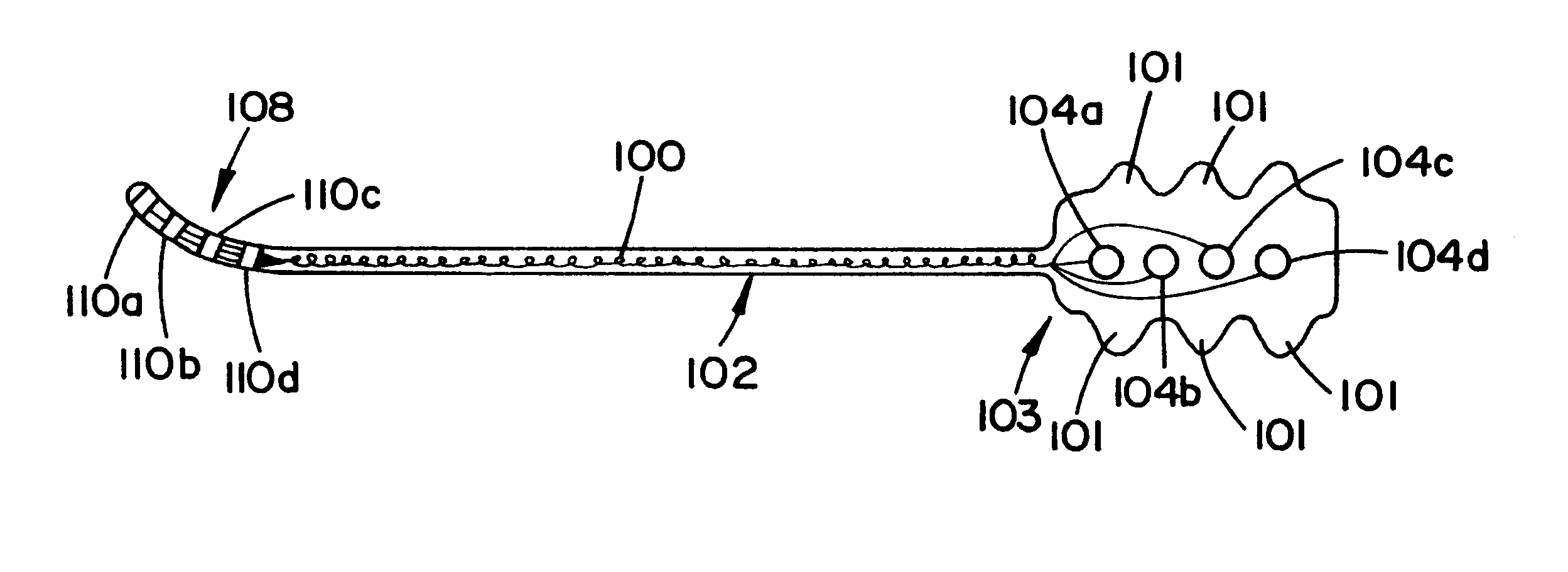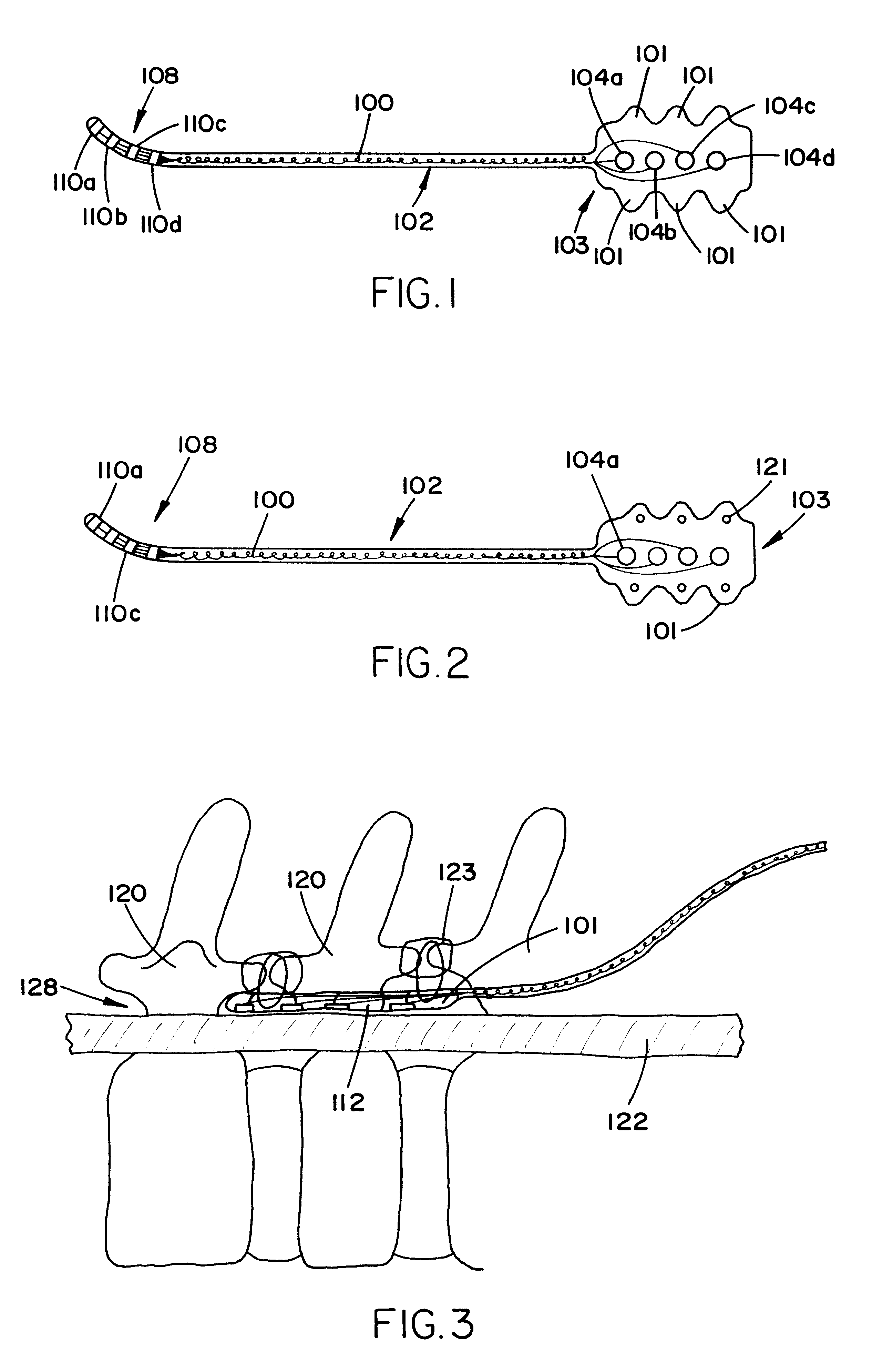Spinal cord electrode assembly having laterally extending portions
a technology of spinal cord and electrode assembly, which is applied in the direction of spinal electrodes, internal electrodes, therapy, etc., can solve the problems of affecting the effect of the treatment, and causing the entire procedure to be suspect, so as to achieve the effect of avoiding recurrence and reducing the risk of recurren
- Summary
- Abstract
- Description
- Claims
- Application Information
AI Technical Summary
Benefits of technology
Problems solved by technology
Method used
Image
Examples
Embodiment Construction
While the present invention will be described more fully hereinafter with reference to the accompanying drawings, in which particular embodiments are shown, and with respect to methods of implantation, it is to be understood at the outset that persons skilled in the art may modify the invention herein described while achieving the functions and results of this invention. Accordingly, the descriptions which follow are to be understood as illustrative and exemplary of specific structures, aspects and features within the broad scope of the present invention and not as limiting of such broad scope. Like numbers refer to similar features of like elements throughout.
Referring now to FIG. 1, the present invention comprises a spinal cord stimulation electrode having laterally extending portions 101 of the terminal pad section 103. The laterally extending portions 101 are provided so that the surgeon may have a structural portion through which he or she may safely introduce a suture to ancho...
PUM
 Login to View More
Login to View More Abstract
Description
Claims
Application Information
 Login to View More
Login to View More - R&D
- Intellectual Property
- Life Sciences
- Materials
- Tech Scout
- Unparalleled Data Quality
- Higher Quality Content
- 60% Fewer Hallucinations
Browse by: Latest US Patents, China's latest patents, Technical Efficacy Thesaurus, Application Domain, Technology Topic, Popular Technical Reports.
© 2025 PatSnap. All rights reserved.Legal|Privacy policy|Modern Slavery Act Transparency Statement|Sitemap|About US| Contact US: help@patsnap.com


